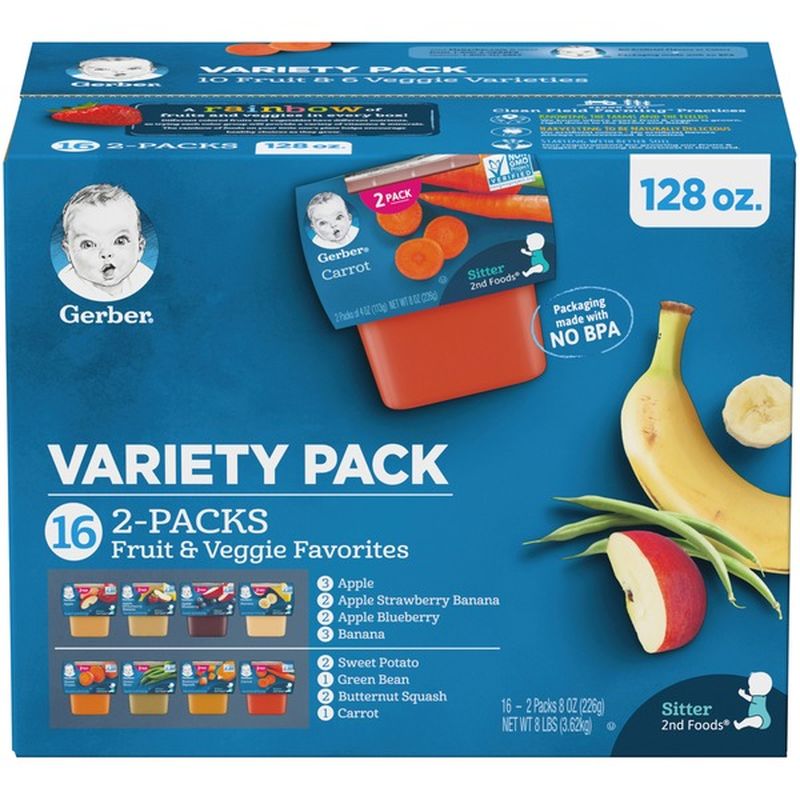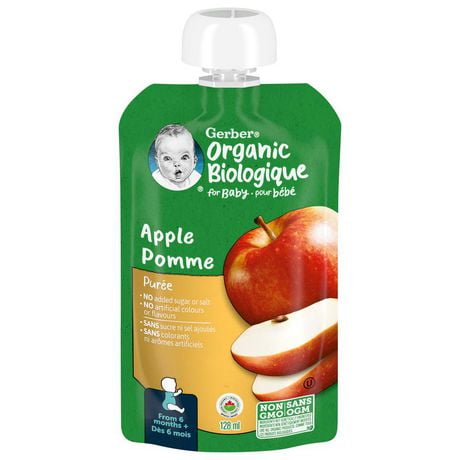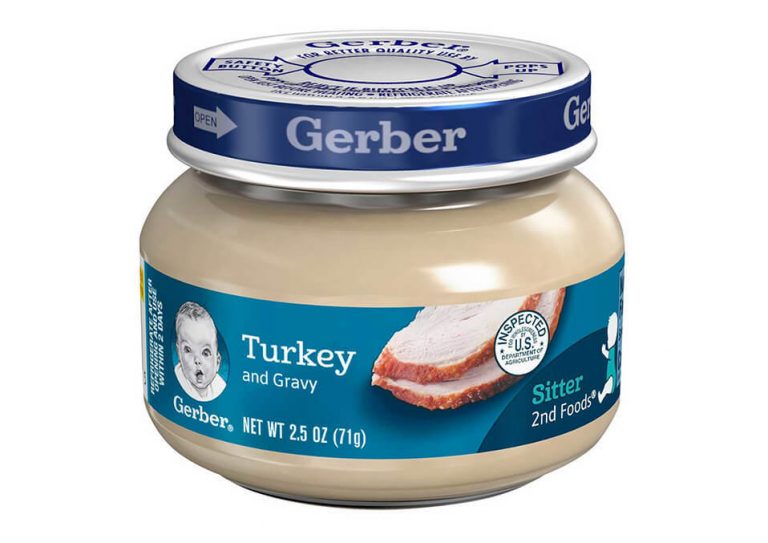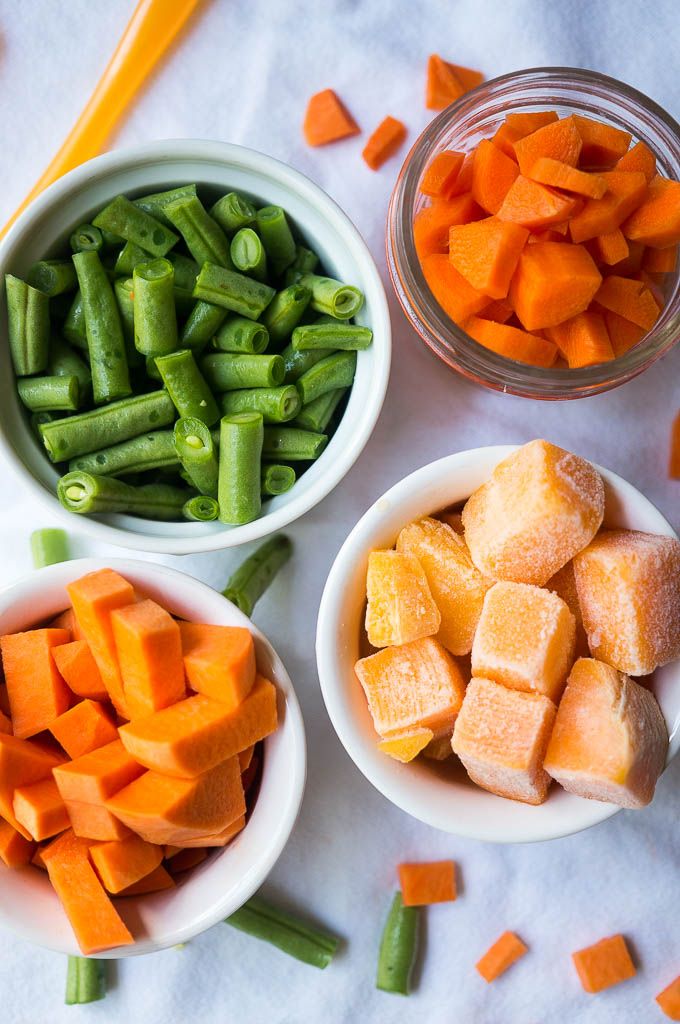When can you feed a baby gerber food
When Can Babies Eat Gerber?
Baby Milestones: Starting Gerber
It probably seems like you welcomed your little one to the world just yesterday, and now he’s ready to start solids. Any new food besides formula or breast milk is considered a solid. Exploring new foods is an exciting time for mom and baby as you help him check out all the new tastes and textures. Gerber makes some ideal starter foods for your little one. Keep a few things in mind as your little guy expands his palate.
Signs Your Baby Is Ready to Eat Gerber
How Long Should I Feed My Baby Gerber Cereal for Babies?
Learn More
Like any milestone, the age that little ones are ready to eat Gerber varies. The American Academy of Pediatrics recommends waiting until your baby is 6 months old to start solids, but some pediatricians say it’s OK to start between 4 and 6 months. Check with your pediatrician to see what age he thinks is best.
Experts consider more than just age when introducing new foods, though. Keep an eye out for some signs your little one is ready to dig in to some new tastes. Your baby should be able to hold her head up well and turn it smoothly from side to side. She should also seem interested in food. Does she seem eager to take a bite or grab your fork if you’re eating near her? If so, she’s probably ready to try her own food.
If you start solids too early, it's possible your little one will just push the food right back out. This is because babies are born with something called a “tongue thrust reflex.” When something unusual is placed on your baby's tongue, she automatically sticks her tongue out rather than back. This protects your little one from choking, but it also makes it unlikely she'll push any food back into her throat before she's ready. This reflex starts to go away between 4 and 6 months.
Before 4 months, your little one's tongue and swallowing mechanisms also may not be ready to work together. This means that while she may not push it right back out, she may just move food randomly around in her mouth.
Good Starter Foods
No specific rules exist as to which food to introduce first, but many moms start with a single-grain cereal. These are good starter foods because most cereals are loaded with iron, which is good for your little one’s brain development, and they’re fairly easy for baby to digest.
Baby rice, barley or oatmeal are all popular cereals. Mix the cereal with breast milk or formula to a fairly thin consistency the first few times you offer some. As your little one gets used to the texture, you can thicken it by mixing in less liquid.
If you don’t offer cereal, introduce meat purees fairly early to ensure your baby is getting the necessary iron.
Choosing to start with a fruit or a vegetable is up to you. Starting with vegetables doesn’t guarantee your little guy will prefer them over sweeter fruits because babies have a natural preference for sweets. However, meats and vegetables have more nutrients than fruits or cereals.
It’s best to stick with pureed foods until your baby can sit up and bring his hands or other things to his mouth. At this point, you can offer small, soft finger foods such as small pieces of banana, thoroughly cooked pasta, scrambled eggs or chopped chicken.
At this point, you can offer small, soft finger foods such as small pieces of banana, thoroughly cooked pasta, scrambled eggs or chopped chicken.
Making Eating Fun
When Can Babies Eat Yogurt?
Learn More
Actually feeding your little one the solids is the fun, but messy part. Put her in a high chair and put a bib on her. Better yet, strip her down to her diaper as long as it’s not too cold. Have a camera nearby so you can capture these firsts.
Put a dab of food on your little one’s high chair tray so she can explore it while you work on feeding her. She might surprise you and stick her fingers in it and then try it herself.
Pick a time of day when neither you nor your little one is tired and you have plenty of time to enjoy the experience. You might try nursing her or giving her a bottle first, so she’s not starving in case she doesn’t take to solids right away.
Use a baby-sized spoon to give your little one a half-spoonful or less of food. Don’t be surprised or upset if she makes funny faces or spits the food back out. It may take a few tries for her to get a feel for the texture. Talk to her while you’re feeding her to encourage her. Try some songs or zoom the airplane in to make the experience fun for her. If she cries or turns away, don’t push it. Try again in a week or so.
Don’t be surprised or upset if she makes funny faces or spits the food back out. It may take a few tries for her to get a feel for the texture. Talk to her while you’re feeding her to encourage her. Try some songs or zoom the airplane in to make the experience fun for her. If she cries or turns away, don’t push it. Try again in a week or so.
Allergy Considerations
As you introduce new foods, wait a few days to offer each one. This allows you to watch for any allergic reaction such as diarrhea, rash or vomiting. If you notice any of these reactions, stop giving the new food and talk to your pediatrician.
Once you’ve determined one food is safe, you can still offer that one even when introducing a new food.
Even highly allergenic foods, such as peanut butter, eggs, milk and fish, can be introduced to your baby early on as long as he hasn’t been diagnosed with any other food allergies, no siblings have an allergy, and he doesn’t have moderate-to-severe eczema.
The only things your baby should not have before age 1 are honey, which can cause botulism, and whole milk, which can be too difficult for your little one to digest.
Solids, Finger Foods, and More
Written by Gina Shaw
In this Article
- Baby Milestone 1: When They Can Start Solids
- Baby Milestone 2: When They’re Ready to Move From Puree to Chunks
- Baby Milestone 3: When They Can Sit in a High Chair
- Baby Milestone 4: When They Can Manage Finger Foods
- Baby Milestone 5: When They Start Using Spoons
- Baby Milestone 6: When They Can Try Highly Allergenic Foods
- Baby Milestone 7: When They Can Drink Water
- Baby Milestone 8: When They Can Completely Feed Themselves
There are many milestones that need to be achieved when a baby is ready to start to eat solid foods. Here are some of the big ones.
Baby Milestone 1: When They Can Start Solids
Most pediatricians, and the American Academy of Pediatrics, recommend introducing solid foods to babies when they are between ages 4 and 6 months. That’s when they start to lose the “tongue-thrust reflex” or extrusion reflex, which is important for sucking the breast or bottle when they are younger, but interferes with feeding. Babies at this point can also lift their heads up independently and hold their necks high.
Babies at this point can also lift their heads up independently and hold their necks high.
If your baby is around this age, can sit up well with support, and shows interest in the foods they see you eating, it’s probably a good time to venture into feeding your baby solid food. If your baby is exclusively breastfed, it is recommended that you wait until they are 6 months to start solids.
Baby Milestone 2: When They’re Ready to Move From Puree to Chunks
“Chunking up” babies’ food is a process -- obviously, they shouldn’t go straight from rice cereal to raisin bran. But after the first few weeks of adjusting to eating rather than just drinking their food, your baby should be ready to handle a little more texture in solid foods.
Introduce new textures slowly. Good starters are mashed bananas or mashed avocados. You can also use the “staged” store-bought baby foods -- going from the smooth puree of stage 1 to the slightly thicker stage 2 and then the chunkier stage 3 by around 9 months of age. (Babies don’t necessarily have to have a lot of teeth to handle more texture in their foods -- they can often gum soft foods very well!)
(Babies don’t necessarily have to have a lot of teeth to handle more texture in their foods -- they can often gum soft foods very well!)
Baby Milestone 3: When They Can Sit in a High Chair
When babies are ready to eat solid foods, they can sit upright with support and hold up their head and neck. They're capable of sitting in a high chair! That's a serious milestone, but you'll need to follow these safety rules: Always buckle a baby into their chair for safety, even if they are unable to get out with the tray in place. As they get older and become more active, they may be able to squirm out. It is a good habit to buckle a child as soon as you place them in their chair -- even if you think there's no chance they could fall out or climb out. You may get distracted for a moment, which happens really easily when we are trying to do a million things at once!
Baby Milestone 4: When They Can Manage Finger Foods
Babies between ages 7 and 11 months usually tell you they’re ready to eat more grown-up foods by trying to grab them from you. Almost any food that is healthy and nutritious and has a soft texture makes a good finger food, if it’s cut small enough: diced pasta; small pieces of well-cooked vegetables such as carrots, peas, or zucchini; and pea-sized bites of chicken or soft meat. Small, unsweetened round cereals and cereal puffs are also a good choice. Avoid feeding your baby grapes, hot dogs (even cut up), nuts, and hard candy, as they are choking hazards.
Almost any food that is healthy and nutritious and has a soft texture makes a good finger food, if it’s cut small enough: diced pasta; small pieces of well-cooked vegetables such as carrots, peas, or zucchini; and pea-sized bites of chicken or soft meat. Small, unsweetened round cereals and cereal puffs are also a good choice. Avoid feeding your baby grapes, hot dogs (even cut up), nuts, and hard candy, as they are choking hazards.
At first babies “rake” food into their hand, but soon they develop the “pincer grasp” that allows them to pick up small objects between thumb and forefinger. At that point, your baby can become a pro at self-feeding, so encourage finger foods and let your baby explore!
Baby Milestone 5: When They Start Using Spoons
Almost as soon as babies adjust to being fed with a spoon, they'll want to hold and grab the spoon themselves and put it in their mouths. That doesn't mean they're graceful, of course.
Most babies don’t learn to use a spoon effectively until after their first birthday, but let a younger baby who’s interested give it a whirl for practice. Try giving them a soft-tipped spoon to hold while you feed them with another. They can get used to holding the spoon themselves and will also be distracted from grabbing yours.
Try giving them a soft-tipped spoon to hold while you feed them with another. They can get used to holding the spoon themselves and will also be distracted from grabbing yours.
When you think they are ready to actually navigate the spoon into their mouth, try thicker, stickier foods like yogurt, mashed potatoes, or cottage cheese. Another tip: Put some cream cheese on the spoon and then a few pieces of O-shaped cereal on top. The cream cheese won’t fly everywhere, and the baby can get the experience of actually getting the cereal into their mouth.
Expect a mess! Use a plastic or other waterproof bib, and put a mat under the high chair to make cleanup easier.
Baby Milestone 6: When They Can Try Highly Allergenic Foods
Some pediatricians still recommend waiting until children are at least age 1 before offering them certain foods that are considered highly allergenic, like eggs or fish. But current research doesn’t demonstrate any benefit to waiting past a certain age to introduce these foods, unless you have a significant family history of food allergies or other reasons to believe your baby may be predisposed to them.
There is no evidence that introducing highly allergenic foods to children under age 1 makes them any more likely to be allergic to them, and the American Academy of Pediatrics (AAP) now says it’s fine to give these foods before the baby's first birthday. Many pediatricians are still very cautious about shellfish and peanuts, however, because allergic reactions to these foods can be particularly dangerous.
Baby Milestone 7: When They Can Drink Water
Babies don't need water during their first 6 months of life. They get all the water they need from breast milk or baby formula. Babies under age 6 months should not be given any water at all, because it’s easy to fill up their tiny stomachs -- and they should be filling up on the nutrients they receive from the milk to grow. Once they start eating mostly solid foods, around age 9 months, they can start water with meals using a sippy cup.
If your older baby shows an interest in water that you’re drinking, there’s no harm in letting them have a few sips. Just don’t let it replace the nutritious breast milk or formula they should be getting.
Just don’t let it replace the nutritious breast milk or formula they should be getting.
Baby Milestone 8: When They Can Completely Feed Themselves
Mastering eating with utensils is a long process. Most babies do not become really skilled at it until they are well past their first birthday. Encourage your child to practice safely, and again, be prepared for a little mess. (How else will you get the “oatmeal in the hair” pictures that will embarrass them years later?)
Baby food Gerber | About the most beloved and beautiful
Every mother who cares about the health of her baby faces the problem of choosing baby food. Which baby food is the most useful, what products it is made from, whether the baby will like it - these are questions that concern any mother. Much in the production of quality food for children depends on the integrity of the manufacturer. Therefore, when choosing baby food, you should trust more proven companies that have managed to establish themselves in the world market.
Gerber has been making baby food for over 80 years. The company's products are distinguished by a wide range, high quality raw materials, the use of the most advanced technologies for the production of tasty and healthy baby food. Gerber offers its customers fruit juices, fruit, fruit and cereal, meat, vegetable, meat and vegetable purees, fruit and milk desserts.
Gerber fruit and vegetable purees
From 4-5 months, pediatricians recommend introducing vegetables and fruits into the child's diet, which are important for the health and development of the child, because are a source of potassium, iron, organic acids and plant fibers.
Complementary foods are a big step in your baby's nutrition. It is very important to choose the right products at the very beginning, as the health of the child also depends on this in the future. There is a lot of opinion and disagreement about the timing of the introduction of complementary foods. There are supporters of complementary foods for babies from 4 months. Some mothers introduce complementary foods when the child is 1 year old.
It is very important to choose the right products at the very beginning, as the health of the child also depends on this in the future. There is a lot of opinion and disagreement about the timing of the introduction of complementary foods. There are supporters of complementary foods for babies from 4 months. Some mothers introduce complementary foods when the child is 1 year old.
Doctors recommend introducing complementary foods from 6 months. The first complementary foods are usually started with fruit juices, vegetable and fruit purees. It is at this stage that the baby begins to get acquainted with the variety of new tastes. Quality baby food accelerates the physical development of the baby. But how, among the variety of manufacturers and names of companies producing children's products, to choose, and not be mistaken, high-quality nutrition, rich in all the necessary trace elements and vitamins?
Pediatricians recommend introducing complementary foods for children with low weight in the form of cereals, and for overweight children - vegetable and fruit purees. It is recommended to introduce complementary foods gradually, starting with small doses of 1-2 teaspoons. It is better to give complementary foods at the beginning of the day, so that during the day you can monitor the condition of the child, to exclude allergic reactions.
It is recommended to introduce complementary foods gradually, starting with small doses of 1-2 teaspoons. It is better to give complementary foods at the beginning of the day, so that during the day you can monitor the condition of the child, to exclude allergic reactions.
Gerber one-component vegetable purees from carrots, cauliflower, white potatoes, pumpkin, broccoli and fruit purees from prunes, apples, pears, peaches are ideal for the first feeding. A little later, the baby can be offered multi-component purees: Cauliflower and Potato, Apple and Pear, etc. Gerber vegetable and fruit purees are made from environmentally friendly ripe fruits and vegetables without starch or preservatives.
Vegetable puree is recommended to start with one-component puree. It is better to start with cauliflower or broccoli. If the child refuses some types of puree, it can be recommended to add fruit pieces that the baby likes to the puree. But, if the child categorically refuses the dish, in no case should you force-feed him. It is better to take a break and offer new food when the child comes from a walk and is hungry enough.
It is better to take a break and offer new food when the child comes from a walk and is hungry enough.
Now baby food in the trading network is presented in a huge amount and assortment. Well, thank God, there are plenty to choose from! Let's take a look at some of the popular and best-selling food products that are produced by Gerber.
Fruits, vegetables and meat from which baby food is produced do not contain genetically modified products, dyes, preservatives, flavor and aroma enhancers, stabilizers. The company produces almost 70 types of baby food - fruit juice, fruit and vegetable purees, vegetable stews, fruit purees with cottage cheese. Gerber products are varied, tasty, natural, healthy nutrition for children.
The company produces one-component and multi-component vegetable and fruit purees, which is very convenient to gradually introduce the baby to a variety of new foods. The advantages of Gerber baby food are the modern technological process of their preparation. All products of this company are not subjected to intensive heat treatment, and this allows the products not to change their natural color and taste. Gerber products are free of starch and thickeners. One-component vegetable purees are used for the first feeding: carrots, cauliflower, white potatoes, pumpkin, broccoli. Children like carrots, cauliflower, pumpkin very much.
All products of this company are not subjected to intensive heat treatment, and this allows the products not to change their natural color and taste. Gerber products are free of starch and thickeners. One-component vegetable purees are used for the first feeding: carrots, cauliflower, white potatoes, pumpkin, broccoli. Children like carrots, cauliflower, pumpkin very much.
Excellent one-component fruit purees: prunes, pear, apple, peach. Children especially like pear and apple. One-component purees of the first complementary foods can be given to babies from 4-6 months.
Lots of Gerber products for babies from 6 months. Puree from various vegetables with veal, rabbit and chicken is an ideal nutrition with the content of essential fatty acids Omega 3 and Omega 6, which contribute to the development of the brain, strengthen the child's vision and immunity. This is very important, since these acids can only enter the human body with certain foods.
From the age of 6 months, children can be offered fruit purees with cottage cheese, such as apricot, banana, strawberry, peach. The benefits of cottage cheese in baby food are great. This fermented milk product is rich in calcium, potassium, sodium, phosphorus, vitamin B12, B2. Cottage cheese contains a large amount of protein needed by a growing body.
The benefits of cottage cheese in baby food are great. This fermented milk product is rich in calcium, potassium, sodium, phosphorus, vitamin B12, B2. Cottage cheese contains a large amount of protein needed by a growing body.
Gerber products are also very convenient because the older the child, the more varied the food, and the volume of jars is increased according to age. Gerber juices also deserve special mention. We will not describe how useful juice is for a child's health, how many vitamins, organic acids and minerals it contains. It is very convenient that Gerber juices are also divided into single-component and multi-component. This allows you to enter them from 4 months. One-component apple and pear juices are low allergenic. Therefore, it is recommended to start complementary foods with them. As the child grows, multi-component juices such as apple and carrot can be introduced; apple, grapes and wild rose; apple, grape and mint, etc. The value of Gerber juices lies in the fact that they are all made without preservatives and sugar. Due to their natural taste and nutritional value, many mothers have approved Gerber juices and give them to their children. Gerber means healthy, strong children and calm mothers! Gerber is a reliable assistant for moms!
Due to their natural taste and nutritional value, many mothers have approved Gerber juices and give them to their children. Gerber means healthy, strong children and calm mothers! Gerber is a reliable assistant for moms!
Gerber fruit juices
Juice should not be introduced into the baby's diet before 4-5 months of age. You should start with single-component juices. Gerber produces apple juice (clarified or with pulp) and pear juice. Gerber juices made from two or more fruits: "Apple-Carrot", "Apple-Pear", "Apple-Peach", "Apple-Cherry" are perfect for children from 5 months.
Gerber puree assortment
Gerber puree with cottage cheese.
An important baby food is cottage cheese, which contains a lot of protein and calcium salts. It is also rich in iron, vitamins B1 and PP. Gerber puree from apricot with cottage cheese, banana with cottage cheese, peach with cottage cheese and strawberry with cottage cheese is not only healthy, but also very tasty.
Gerber puree with cream.
The cream contains a large amount of easily digestible milk fat, as well as fat-soluble vitamins. Pear puree with cream, peach with cream, banana with cream, strawberries with cream, apricot with cream will please the baby.
However, it should be remembered that children with cow's milk intolerance should only be introduced to dairy products after consulting a pediatrician.
Gerber meat purees.
Meat puree is an essential food product for babies from 6 months. Meat contains vitamins, iron, protein and other nutrients that play an important role in the development and growth of the child. Gerber baby food are meat purees made from all types of meat suitable for a child: chicken, turkey, beef, veal, pork, lamb and rabbit. In addition to meat purees, Gerber baby food includes various types of vegetable puree with meat: vegetable puree with rabbit, veal stew with pumpkin and carrots, turkey stew with rice, etc.
Taking into account all the possible taste preferences of its little consumers, Gerber is constantly expanding the range of products offered. Gerber DoReMi products are fresh fruit smoothies, fruit and cereal bars, cookies.
Gerber has achieved the most important thing - the baby food it produces has earned the trust of buyers in many countries of the world due to the observance of the main principle for every mother - tasty and healthy.
Record tags: baby food, baby health, baby food, palm oil
"Gerber" baby food to start complementary foods ~
The first complementary food plays a significant role in the normal intellectual development of the baby, since it is with him that the baby begins his acquaintance with adult food, and with it he will receive all the most necessary and useful for immunity and health.
Parents should take a very responsible approach to the choice of complementary foods, paying special attention to the quality of products.
The Gerber nutrition range has several products in its line that are recommended to start complementary foods for your baby.
Gerber: the beginning
The history of the product began in 1927, when the wife of a cannery owner was preparing mashed potatoes for her own child, it was at that moment that she realized that she could try preparing baby food in her husband's factory - in canned form.
Already the first batch of products, in which there were only 5 types of puree, namely Gerber puree from spinach, carrots, green peas, prunes and beef, was a great success, and became the starting step for the further prosperity of the company.
To date, the assortment of mixtures " Gerber " has tons about 500 varieties of baby food which are represented in many countries of the world. At least 80 types of Gerber products are already on the Russian market.
Why mothers choose Gerber ?
The Gerber factory keeps its own products under constant control, which meets all the quality parameters of baby food. The company's specialists control the entire manufacturing process, from the very beginning, until the jars appear on the shelves of a store or pharmacy.
The company's specialists control the entire manufacturing process, from the very beginning, until the jars appear on the shelves of a store or pharmacy.
There are several aspects of production that guarantee the success of the Gerber brand:
- quality,
- sterility,
- wide selection.
Gerber nutrition: assortment
Introducing the Gerber assortment that will help parents make the right choice for their child.
- Fruit or vegetable puree (single component),
- Fruit or vegetable puree (multiple component),
- Fruit purees in special soft packs,
- Vegetable purees with meat components,
- Fruit and milk desserts.

The structure of one-component purees includes fruits such as pear, prunes, apple and peach, and vegetable purees consist of carrots or zucchini.
Multi-ingredient purees available in 14 varieties, e.g. apple and pear, milk and zucchini, potato and cauliflower, etc.
Purees in soft packs "Gerber" are very convenient for trips or while walking, in this case you do not need to worry that the jar will break or fall. Soft packaging is also convenient because it takes up very little space in the bag.
How to start with Gerber complementary foods?
It must be remembered that it is better to start complementary foods with one-component purees (fruit or vegetable), and in no case before 6 months, then you can gradually move on to multi-component purees, carefully looking at the reaction of the baby's body.
By the age of 8-9 months, the child can be offered vegetable purees with Gerber meat, understanding that this is a completely new step in feeding the baby, as he gets acquainted with a completely unfamiliar food (meat).
At the age of 10 months, the baby can already be fed with those products of the company to which he has already shown his affection, that is, if the mother observed the desire of the child to eat one or another type of product.
When to start complementary foods with Gerber?
Gerber mixtures can be started from the beginning of complementary foods, that is, from six months.
Product classification by age is written on the labels, this makes the choice of assortment more accessible.
Any caring mother one day faces the challenge of choosing high quality food for her child. If the baby is gaining weight well and is breastfeeding, then experts do not advise introducing complementary foods into the child's diet before six months.
But very often there are cases when the baby eats artificial mixtures, but even they cannot supplement the normal weight balance. It is for such cases that the company has developed special nutrition from 4 months , which mainly consists of one-component fruits or vegetables, which are considered a source of vitamins and minerals that the baby needs.











